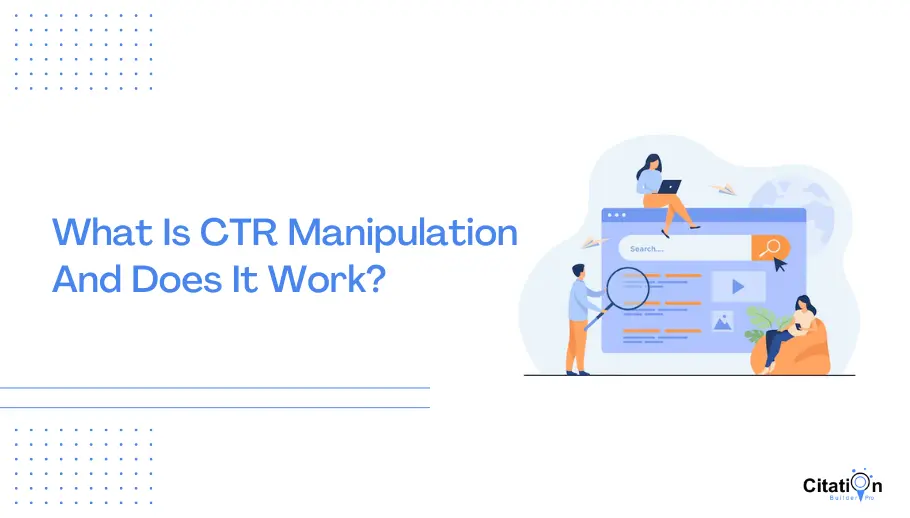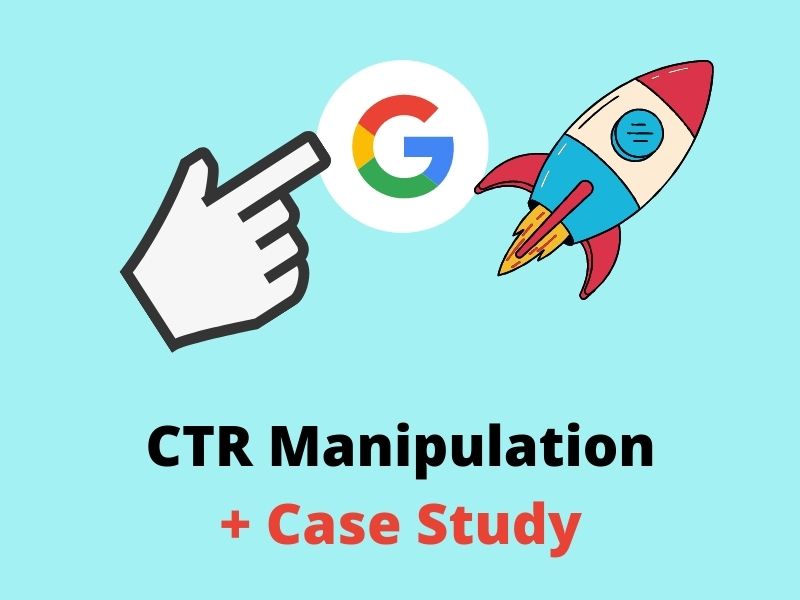Make Best Use Of Click-Through Rates Making Use Of Proven CTR Manipulation Techniques
Make Best Use Of Click-Through Rates Making Use Of Proven CTR Manipulation Techniques
Blog Article
Boost Your Rankings With Effective CTR Manipulation Techniques
In the realm of search engine optimization, understanding and effectively adjusting your click-through price (CTR) can dramatically influence your rankings. By crafting engaging meta titles and descriptions, and using abundant snippets, you can improve exposure and attract user involvement. In addition, the tactical use of A/B testing permits the refinement of content aspects, making sure positioning with target market preferences. However, the subtleties of CTR optimization expand far past these preliminary approaches, elevating inquiries regarding their lasting effect and the progressing landscape of search engine optimization. What further techniques can drive your positions to brand-new elevations?
Understanding Click-Through Rate
Although the click-through rate (CTR) is a basic metric in digital advertising, its implications extend far past plain numbers. CTR is specified as the ratio of individuals that click a particular link to the number of overall individuals who see a page, ad, or e-mail . This metric offers as an essential sign of the effectiveness of online projects and content involvement.
Recognizing CTR involves identifying its elements: clicks and impacts. Perceptions show just how usually a web link is revealed, while clicks signify individual interaction with the content. A high CTR suggests that the material resonates with the target market, triggering them to take action. Alternatively, a reduced CTR might suggest a disconnect between the web content and its target group, necessitating a reevaluation of the messaging or targeting techniques.
Moreover, analyzing CTR patterns with time can produce understandings into individual habits and choices, allowing marketers to customize their approaches better. Eventually, realizing the nuances of CTR is vital for maximizing digital advertising efforts and enhancing overall campaign efficiency. By leveraging this understanding, services can refine their method to boost user interaction and drive much better results.
Value of CTR for SEO
The click-through rate (CTR) plays a pivotal duty in search engine optimization (SEARCH ENGINE OPTIMIZATION) as it directly influences a website's visibility and ranking on internet search engine results web pages (SERPs) A higher CTR suggests to search engines that a page is engaging and relevant to users, which can positively impact its ranking. GMB CTR Manipulation. This relationship is important for internet site proprietors seeking to enhance their on-line visibility
Internet search engine, especially Google, utilize algorithms that consider customer involvement metrics like CTR to assess the top quality of search results. When customers constantly click on a details web link over others, it signifies to the algorithm that the material meets individual intent, triggering it to increase that page's ranking. Alternatively, a reduced CTR can recommend that the web content is not resonating with users, possibly resulting in decreased visibility.
Moreover, improving CTR adds to greater organic traffic, which can result in boosted conversions and brand awareness. As a result, understanding and boosting CTR needs to be a basic element of any SEO approach (CTR Manipulation). By concentrating on CTR, companies can not just enhance their search rankings yet also ensure they effectively attract and retain their target audience
Crafting Engaging Meta Titles
Crafting engaging meta titles is an essential part in boosting click-through prices (CTR) and, subsequently, improving search engine positions. A meta title functions as the first impression a customer has of your content, making it necessary to catch focus while accurately showing the page's Resources style.
To create an effective meta title, check this begin with keyword optimization. Incorporate main key phrases early in the title to signal importance to search customers and engines alike. Objective for a title length of 50-60 characters to guarantee it shows appropriately throughout search outcomes, avoiding truncation that can obscure necessary details.

Finally, make sure that your meta title lines up with the content on the page. Deceptive titles can bring about high bounce prices, ultimately harming your positions. A well-crafted meta title not only enhances CTR but additionally establishes credibility and trust with possible visitors.
Making Use Of Abundant Snippets
Abundant snippets are a powerful device for improving presence in search results page and enhancing click-through prices (CTR) These improved listings, which show added information such as rankings, reviews, images, and various other relevant data, offer customers check my source with a much more helpful preview of the web content, consequently raising the possibility of clicks.
To successfully make use of rich fragments, executing structured data markup is crucial. By utilizing schema.org vocabulary, webmasters can annotate their website, making it simpler for online search engine to understand the material and context. This structured information can include a variety of styles, consisting of short articles, recipes, occasions, and products, which are tailored to the nature of the material.
In addition, abundant bits contribute to an extra appealing customer experience. When users see aesthetic components or summed up information at a glance, they are much more inclined to engage with the material. In addition, abundant fragments can improve the perceived authority and credibility of a website, as they usually integrate user-generated responses and ratings.
A/B Checking for Optimization
To successfully boost click-through rates (CTR), implementing A/B screening can significantly improve material approaches. This technique involves contrasting two variations of a webpage or material item to establish which one carries out better in drawing in clicks. By methodically checking different elements-- such as headlines, photos, call-to-action switches, and also meta summaries-- marketers can acquire useful insights into customer choices and actions.
A/B screening allows for data-driven decision-making, eliminating uncertainty. For example, an engaging headline might raise involvement significantly contrasted to a much less appealing option. It is critical to check one variable each time to properly connect changes in CTR to that specific aspect.

Final Thought
Finally, efficient click-through rate manipulation approaches play an important duty in enhancing internet search engine rankings. By understanding the value of CTR, crafting engaging meta titles, making use of abundant bits, and applying A/B screening, sites can maximize their visibility and involvement. Continuous analysis of CTR patterns enables recurring improvement of approaches, eventually driving organic website traffic and boosting general SEO efficiency. Employing these methods systematically makes sure alignment with customer preferences and takes full advantage of electronic advertising initiatives.
CTR is defined as the proportion of users who click on a particular link to the number of overall users who watch a promotion, page, or email .Moreover, assessing CTR fads over time can generate understandings right into customer actions and choices, enabling marketing experts to tailor their methods much more efficiently. A higher CTR indicates to search engines that a page is pertinent and engaging to users, which can favorably affect its position.Look engines, especially Google, use formulas that variable in user involvement metrics like CTR to analyze the quality of search outcomes. On the other hand, a reduced CTR can suggest that the material is not resonating with individuals, potentially leading to decreased visibility.
Report this page